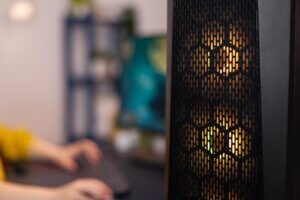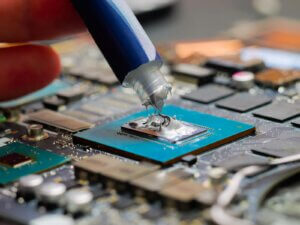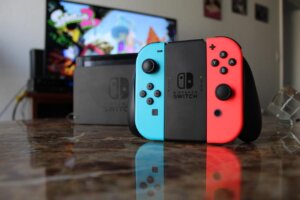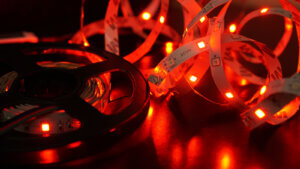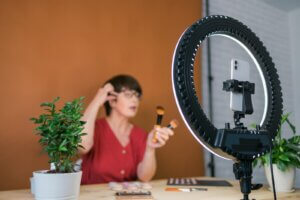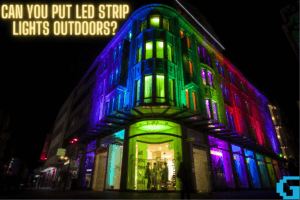For customers searching for a chic approach to lighting up their houses, LED strip lights have recently grown to be a well-liked and highly sought-after option. But we have one major concern: Do LED strip lights use a lot of electricity?
One of the most crucial coamponents of lighting for many people is using lights that don’t have much electricity. So, is this the same case with LED light strips?
LED strip lights do not use a lot of electricity. Compared to standard incandescent lighting, these strip lights use much less energy. Because of their energy-efficient design, they often have lower electricity bills and a reduced environmental impact.
In this article, I’ll answer the question of how much energy LED strip lights are to use to prove that LED light strips do not use a lot of electricity. Read on to see how they compare to other types of lighting, and how to decide if they’re worth the money.
What Should You Know about LED Strip Lights’ Energy Consumption?
An LED is a semiconductor light source that produces light when the current passes through it. Photons are produced when the semiconductor’s electrons and electron holes join again.
The energy needed for electrons to pass through the semiconductor’s band gap determines the hue of the light, which corresponds to the photons’ energy—using numerous semiconductors or coating the semiconductor device with light-emitting phosphor results in white light.
SMD LEDs are primarily responsible for most of the electricity used by LED strips.
LEDs are less energy-intensive and do not heat up too much. They have a lifetime as long as a conventional transistor, which is more than 50,000 hours. They are lighted by the flow of electrons in a semiconductor material.
LEDs provide several benefits compared to traditional incandescent bulbs, but efficiency is by far the biggest. In incandescent lamps, producing light requires a lot of heat (the filament must be heated to be illuminated).
As a significant percentage of the available electricity is not utilized to generate visible light, this energy is entirely squandered unless you use the incandescent bulb as a warmer.
LED light strips generate very little heat in comparison. The electrical demand is significantly decreased since a more significant portion of the electrical energy is utilized to create light directly.
Understanding How LED Strip Lights Work
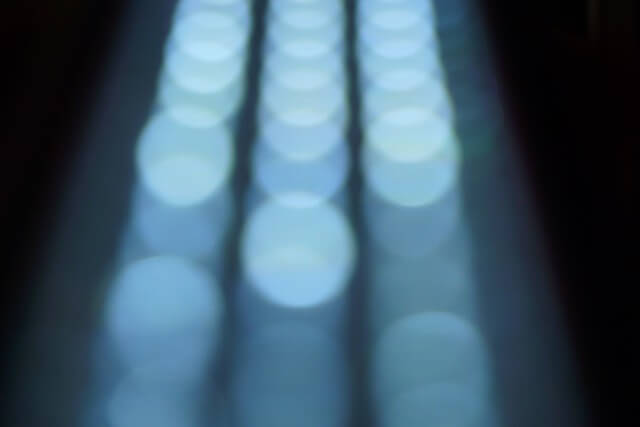
Light-emitting diodes (LEDs) are a form of light used to create LED strip lights. Small, energy-efficient LED lights may be utilized for various tasks, including lighting up residences, places of business, and other locations. Most of the time, flexible strips with several tiny LED lights placed on them make up LED strip lights. This makes it simple to bend and mold them to fit around corners and other barriers.
Why You Should Invest in LED Strip Lights that Do not Use a Lot of Electricity?
LED lighting offers several significant benefits compared to conventional incandescent or fluorescent lighting.
A more flexible and unique color scheme for the lighting in your rooms is also made possible by LED lights, in addition to the energy efficiency and ecologically friendly design I’ve previously mentioned.
Customers may alter the tone and ambiance of their homes via color customization, and it may even improve their mental health, according to some claims.
Strip lights may also be used for more practical things like decreasing eye strain from electronic devices like PC monitors and TVs, eliminating trip hazards, highlighting exciting locations, and more.
How Much Electricity Does an LED Strip Light Use?
You’ll probably think of a straightforward follow-up inquiry if an LED strip light is more energy-efficient than an incandescent-based bulb: how much electricity do these strip lights use or do LED strips use a lot of electricity?
Luckily, most LED light strips do not use a lot of electricity. A typical LED strip lamp uses 7 to 35 watts on average. This wattage varies greatly depending on the device. More environmentally friendly strip lights use little electricity, while brilliant, feature-rich lights might consume nearly as much as an incandescent bulb.
According to CNET, most lights will use far less energy than their maximum output. This decreased energy usage results from the likelihood that you won’t use them at maximum brightness every day.
However, if you get the brightest strip lights with the most panels, you may use as much as 62 watts if you use the light at its maximum output.
You can use our tool to calculate an estimate of how many AMPs your LED lights use.
LED Lighting Vs. Traditional Lighting
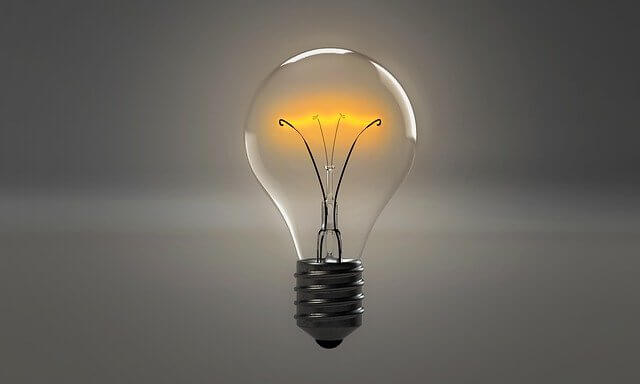
After proving that LED lighting is far more energy-efficient than conventional lighting, allow me to outline the benefits that strip lights with an LED design can provide you.
This site claims that LED light sources are 90% more energy-efficient than traditional incandescent lighting.
Since LED lighting uses less energy, it is less expensive over time. It has a less harmful environmental effect on a house.
Furthermore, strip lights with LED lighting provide better overall illumination than comparable options. The more robust design of the LED strips, which results in a more flawless glow, naturally causes a change in lighting quality.
Energy Productivity of LED Strip Lights
LEDs have very high energy efficiency. Unlike traditional lighting, which relies on a heat-intensive process, LED lighting operates by transforming most of the energy it produces into light rather than heat.
Therefore, compared to fluorescent or incandescent lighting, LED strip lights do not use a lot of electricity as many had thought. In fact, LED strips use much less electricity to create the same quantity of light.
Benefits of LED Lighting
Due to their many advantages, LED strip lights are growing in popularity. They are excellent choices for residential and commercial environments since they are inexpensive, environmentally friendly, and adaptable. Here are a few benefits to think about if you’re thinking of putting LED strip lights in your house or place of business:
- Eco-Friendly
LED strip lights are a terrific option for those who care about the environment. They are more ecologically responsible since they use less energy than standard light bulbs. LED strip lights may use up to 50% less energy than fluorescent bulbs and up to 90% less energy than incandescent bulbs.
- LED Strip Lights are Affordable and Do not use too much Power
Also highly economical are LED strip lights. Although they last a lot longer, they are priced similarly to conventional light bulbs. You will ultimately save money by switching to energy-efficient LED strip lights from conventional light bulbs.
- Versatile
Also, highly adaptable are LED strip lights. They may be readily tailored to meet your demands and are suitable for a wide range of settings and applications. LED strip lights are a fantastic choice whether you want to illuminate a little area or want to design a sophisticated show.
Comparing Led Strip Lights
Choosing an item for your house remains once you’ve determined that LED strip lights are worthwhile.
While there are numerous things you may think about when picking an LED strip light system, there are usually a few essential features you should keep in mind:
- Price: Less-priced strip lights may compete even with traditional lighting sources. However, more expensive designs sometimes come with a heftier price tag.
- Feature selection: Some LED lights emphasize a streamlined and straightforward appearance, while others provide a large variety of valuable and distinctive functions.
- Customizability: If a product’s capacity to be personalized is vital to you, you should probably avoid buying it if it has limited modification choices. Ensure your LED strip lights don’t use a lot of power by customizing them.
Even less expensive and straightforward designs are likely to offer a variety of synchronization choices for WiFi, music streaming, remote control capabilities, etc. since technological complexity has dramatically improved with LED strip lights.
Are LED Strip Lights Expensive to Run?
Even though LED strip lights have many apparent advantages, most purchasers still prioritize price. The most significant factors for a customer are purchase price and ongoing costs.
Running costs for strip lights are relatively low. Even though they are often more costly than incandescent or fluorescent lights, their greater energy efficiency and longer lifetime make them more cost-effective to operate with time than their less expensive counterparts.
Next, I’ll give you a more accurate notion of the market pricing for various kinds of LED strip lights and how much you could pay for them when it comes time to pay your energy bill.
Are LED Strip Lights Worth It?
You could be attempting to determine if the benefits of this form of lighting are worth the overall prices if you’re thinking of buying an LED strip light or series of strip lights.
When it comes to long-term cost reductions, LED strip lights are worthwhile. Despite having higher upfront costs than traditional lighting sources, LED lights cost less in the long run due to their energy efficiency.
Conversely, the increased cost of the LED strip lights is likely to turn away customers who are more concerned with making quick financial gains.
It’s a good thing that there are economical choices that have both immediate and long-term advantages.
Conclusion
Although there are wide variances in the amount of electricity each LED strip light uses, they are often more economical, cost-effective, and valuable for the ordinary user than conventional lighting sources.
Indeed, LED light strips do not use a lot of electricity. Even more, LED strip lights provide a few more advantages to a reduced carbon footprint, more customization options, and favorable impacts on mood and health.
FAQS
Do LED Lights Increase Electric Bills?
LED lighting is designed to be very energy-efficient. You may put them with a regulator (or even without it) to change the light quantity produced. A single strip consumes a lot less power compared to incandescent light. You won’t see an increase in bills as a result.
Simply changing the electricity supply is required to convert lights to LEDs. The majority of building holders or supervisors only install light fittings (more modern or conventional fixture).
Strip lights and spotlights mark other forms of LED lighting. The cheap strip lights, which only store one or two LEDs, may be mounted anyplace. Two LEDs are included in each spotlight light, which you may utilize to illuminate a space uniformly.
How Much Power Does an LED Strip Light Consume?
Is there too much power used by led lights?
The four most common LED light panel types are:
The 7W T7
The 5W T5
The 30W UL20C
The 13W CFL
Comparing LED light panels to incandescent lights, the former uses less electricity. Depending on the light’s strength, less than 5 watts of energy is needed. They thus use more energy.
A 40W LED light will suit a 40–50W panel since most LEDs are available in versions of 8 watts and 4 watts. Usually, a box you can put above a glowing pane connects the two modules, producing enough fun for an uplighter.
Is It Safe to Leave LEDs Lights Running Throughout the Night?
Simply said, well-produced Lighting can be kept on continuously, 24 hours a day, seven days a week. This is since LEDs emit less heat than traditional sources of illumination, making them less prone to overheating or catching fire.
Are Led Lights Better Off Left on Always?
Is there so much energy used by led lights? Let’s jump into the fundamentals.
Do led lights cost less?
Yes! Compared to traditional lighting, most versions hold back 79% on energy.
How much energy do LED lights consume? The most important question is how many watts an LED uses. You can have LED light strips for as cheap as $10, while more electric lights may go as much as $75.
Why Are LED Lights Strips Inexpensive to Manage and do not use a lot of electricity?
Each LED in these small strips uses just 2 watts of electricity, and LED illumination often lasts for many hours. You’ll get much radiance and lifespan with this efficiency.
Given that they are less expensive than other solutions, the main cost of LED lights is the makeup. That is due to the low maintenance needs of LEDs. LED lights don’t need to be changed or upgraded and are pretty easy to use.
Many businesses call for LED lighting. Some examples are workplace structures, game arenas, and car parks.
Do LEDs Burn?
Customers frequently ask this question, but you’re in luck. LED bulbs never need to be replaced. Better still, there is no way for this to occur. Since there is no usage of heat, unlike incandescent bulbs, nor are there any gases or wires to burn out, LED lights cannot go out.
Can You Heat A Room using LEDs?
Even while LEDs generate some warmth, they remain significantly cooler than conventional incandescent lamps. It is unlikely that you will enjoy your lights squandering electricity-producing heat unless you are establishing a hydroponics setup or interior grow area that’d thrive from the warmth and light.
Author
-
Stanley is a passionate writer who loves the written word. With more than seven years of experience in the field, I've learned how to make high-quality, engaging, and helpful content for various niches, such as finance, technology, health, fashion, and more. Writing should not only inform but also inspire and entertain the reader. When I write content, I balance how easy it is to read, how well it uses keywords, and how useful it is to the reader. I enjoy reading, learning about new technologies, and exploring nature in my free time. I look forward to bringing my writing skills to your site and engaging with your audience.
View all posts

